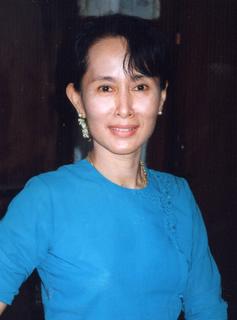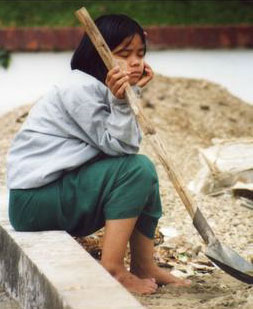There are several different types of antimalarial medication,
the choice of which depends on such factors as area to be
visited, length of stay, your own medical history, medication
you may already be taking, type of holiday (hotel, cruise,
trekking etc).
These drugs can be loosely divided between the older
formulations (Chloroquine and Proguanil) and the more recent
preparations licensed for antimalarial use (Doxycycline,
Mefloquine and Malarone).
Chloroquine has been used for around 50 years and during that
time vast areas of the ‘malarious world’ have
become resistant. As a 4-aminoquinoline derivative
chloroquine prevents nucleic acid synthesis in actively
dividing erythrocitic malarial parasites and thus DNA
synthesis is affected. The drug is taken as two tablets
weekly on the same day of each week, Countries still
sensitive to Chloroquine include Costa Rica, Belize and
Mexico.
Proguanil is a Biguanide which is metabolised in the body to
cycloguanil, an active form that blocks the production of
folic acid and subsequent synthesis of DNA. The human
cells are not affected by this action except during pregnancy
where your doctor will usually give a folic acid supplement
to counteract a possible shortfall in the mothers cells.
As with Chloroquine there is widespread resistance now to
Proguanil and it is often given in areas where the traveller
is unable to take Chloroquine for some reason (such as
sensitivity to the product). The Chloroquine and
Proguanil when combined in one pack as Paludrine/Avloclor
travel pack form a more formidable antimalarial and can be
used in many more areas where the individual drugs would not
be effective enough.
In the Travel Pack of Paludrine/Avloclor produced by Astra
Zeneca the dosage of Proguanil is two daily which would be
taken at the same time and the Avloclor (Chloroquine) is two
weekly, also taken together. (A calendar pack gives an
easy format and prevents mistakes in dosage whilst
away.) Proguanil/Chloroquine is used in countries such
as Sri Lanka, Nepal and most of India. These
preparations can be purchased without prescription from
Pharmacies.
The ‘newer’ group of antimalarials are helping to
prevent malaria in areas where resistance has become a major
problem, the malaria parasites being incredibly adept at
mutating and hence overcoming the drugs used against them.
Malarone is Atovoquone and Proguanil combined to give a
combination of an antiprotozoal and a biguanide. The
dosage is one tablet daily for adults usually taken one or
two days before entering the malarious area, during and for
seven days on leaving. There is also now a paediatric
formulation for children.
Lariam (Mefloquine) is a 4-aminoquinoline (as in Chloroquine)
and in adults is taken as one tablet weekly. To check
for side effects your doctor will often prescribe these at
least two and a half weeks before travel, during and for four
weeks on return.
Last but not least is Doxycycline a well tried and
tested tetracycline antibiotic given as the hyclate.
This was found to have marked antimalarial properties as well
as being an antibiotic. It is usually given one
week before travel (if it has never been taken before),
during and for four weeks on return.
These last three products are prescription only and can only
be obtained from a Pharmacy on supply of a private
prescription issued by your doctor or travel clinic.
Depending on your medical history etc., your doctor will
decide which of these preparations are suitable for your
travels.
Chloroquine for example is not normally given if you suffer
from psoriasis or epilepsy. If taking Warfarin for
blood thinning always check this out with your doctor, and
likewise if pregnant or hoping to become pregnant then again
you must consult your doctor first before taking an
antimalarial drugs.
Your G.P. or Travel Nurse will check out the area you are
about to visit and together with medical history and
knowledge of the type of holiday will prescribe the relevant
antimalarial.
For prices and supply of any of these preparations you can
log on to www.travelpharm.com or ring
us on 01395 233771

 The fact is that the
call for a tourism boycott comes from Burma's elected
leaders. The National League for Democracy (NLD), who won a
landslide victory in Burma's 1990 election, remains the
only party mandated to represent the Burmese people and it is
a party that continues to draw the support and respect of
people inside and outside the country. Burma's Government
in exile, the National Coalition Government of the Union of
Burma (NCGUB), supports the boycott and it is a position that
has the backing of exile Burmese democracy groups around the
world.
The fact is that the
call for a tourism boycott comes from Burma's elected
leaders. The National League for Democracy (NLD), who won a
landslide victory in Burma's 1990 election, remains the
only party mandated to represent the Burmese people and it is
a party that continues to draw the support and respect of
people inside and outside the country. Burma's Government
in exile, the National Coalition Government of the Union of
Burma (NCGUB), supports the boycott and it is a position that
has the backing of exile Burmese democracy groups around the
world.
 The article also fails to mention
that in Burma many human rights abuses are directly connected
to the regime's drive to develop the country for
tourists. Throughout Burma men, women and children have been
forced to labour on roads, railways and tourism projects;
more than one million people have been forced out of their
homes in order to 'beautify' cities, suppress
dissent, and make way for tourism developments, such as
hotels, airports and golf courses. And these abuses are not
confined to history. In February 2004, for example, Burmese
soldiers rounded up ethnic Salons, or 'sea gypsies'
who normally live on boats in the Mergui Archipelago, forced
them to live on land and to take part in a 'Salon
Festival' aimed at foreign tourists.
The article also fails to mention
that in Burma many human rights abuses are directly connected
to the regime's drive to develop the country for
tourists. Throughout Burma men, women and children have been
forced to labour on roads, railways and tourism projects;
more than one million people have been forced out of their
homes in order to 'beautify' cities, suppress
dissent, and make way for tourism developments, such as
hotels, airports and golf courses. And these abuses are not
confined to history. In February 2004, for example, Burmese
soldiers rounded up ethnic Salons, or 'sea gypsies'
who normally live on boats in the Mergui Archipelago, forced
them to live on land and to take part in a 'Salon
Festival' aimed at foreign tourists.